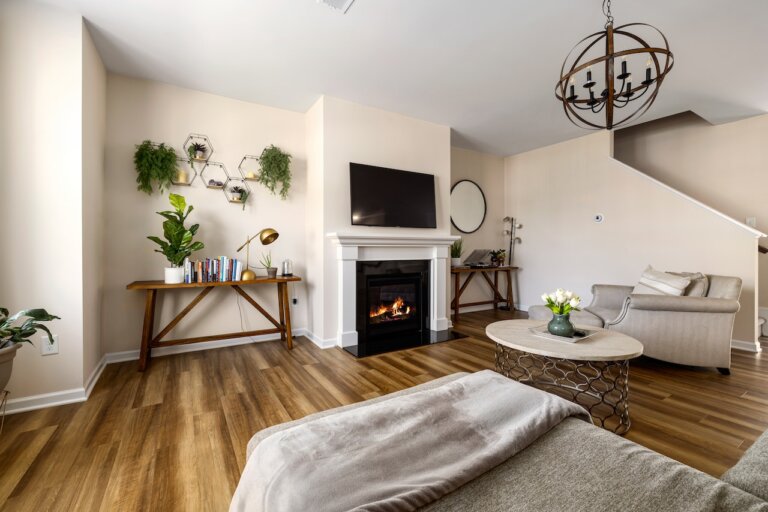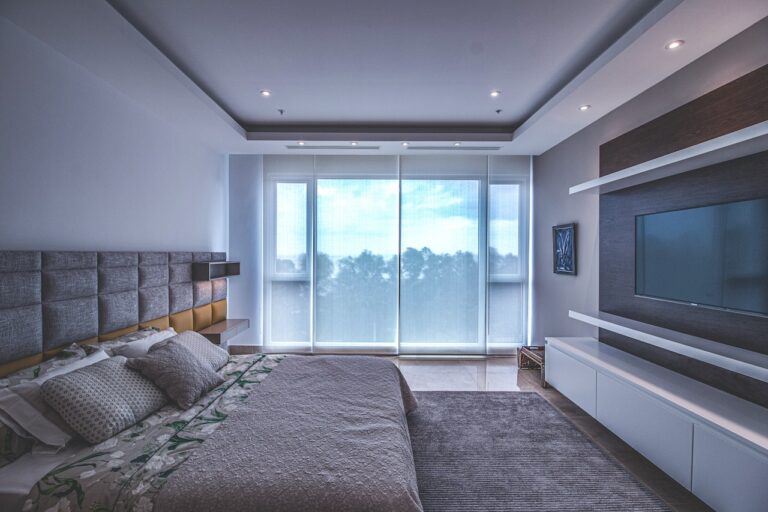Don’t you just love nature? The rustling leaves, the soft sound of a nearby creek, sunlight streaming through the trees.
What if you could bring that all the loveliness right into an indoor space? Too good to be true?
Welcome to biophilic design my friend! So glad you stopped by.
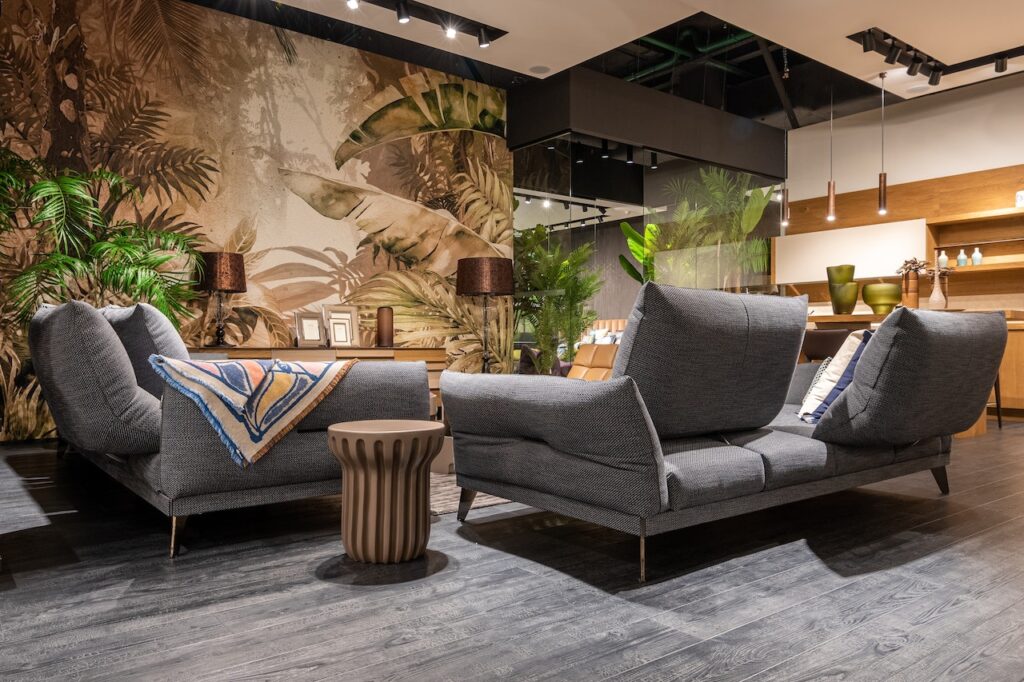
What is Biophilic Design?
Biophilic Design is a concept that celebrates the beauty and benefits of nature by bringing it indoors.
It involves incorporating natural elements, such as plants, natural light, and organic materials, into our living spaces.
The term “biophilia” refers to the innate human connection with nature and the positive impact it has on our well-being.
What is the Concept of Biophilic Design?
Biophilic design is a concept that taps into our innate connection with nature and incorporates it into our built environment.
It takes our love of life or living things and aims to create spaces that foster this love by bringing nature indoors.
What are the Elements of Biophilic Design?
To truly embrace biophilic design, it’s important to incorporate specific elements that evoke a sense of nature.
Here are some key elements to consider:
1. Natural Light
Allowing ample natural light to enter your living spaces is a fundamental aspect of biophilic design.
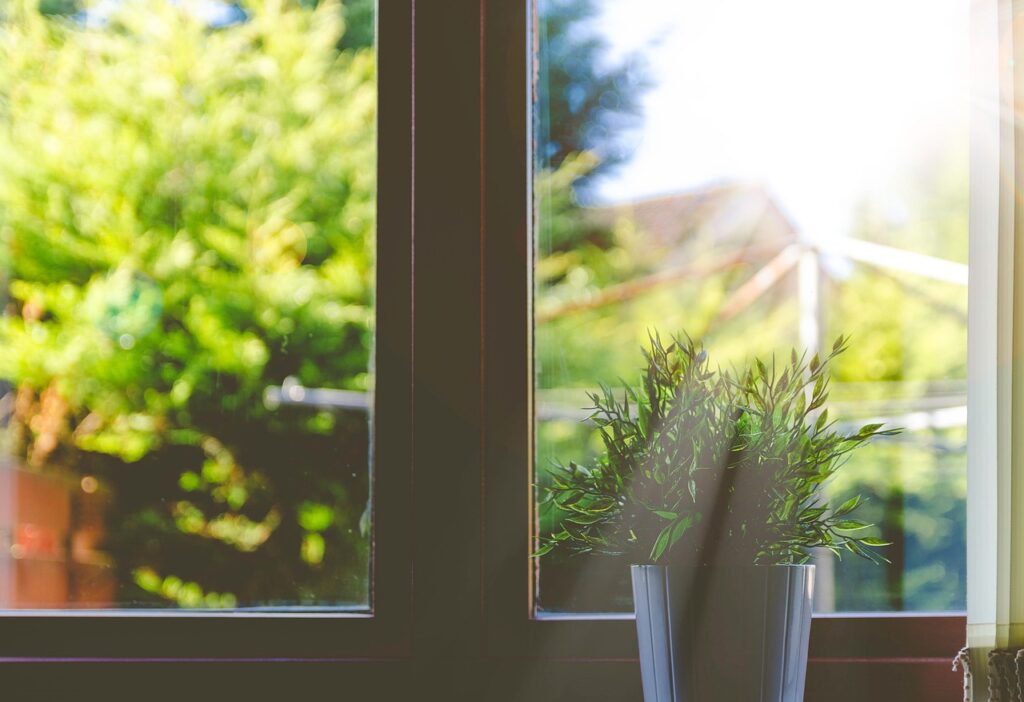
Natural light not only illuminates your home but also positively affects your mood and circadian rhythm.
Consider using skylights, large windows, and light-colored curtains to maximize the amount of daylight that filters into your rooms.
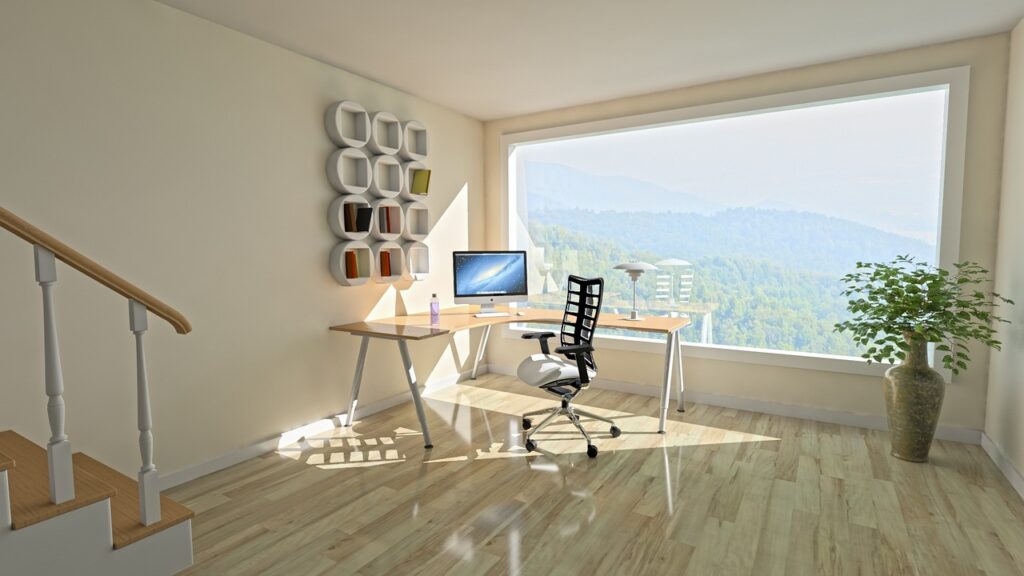
Here’s an article on creating the perfect lighting!
2. Indoor Plants and Greenery
Introducing plants and greenery into your home not only adds visual appeal but also improves air quality.
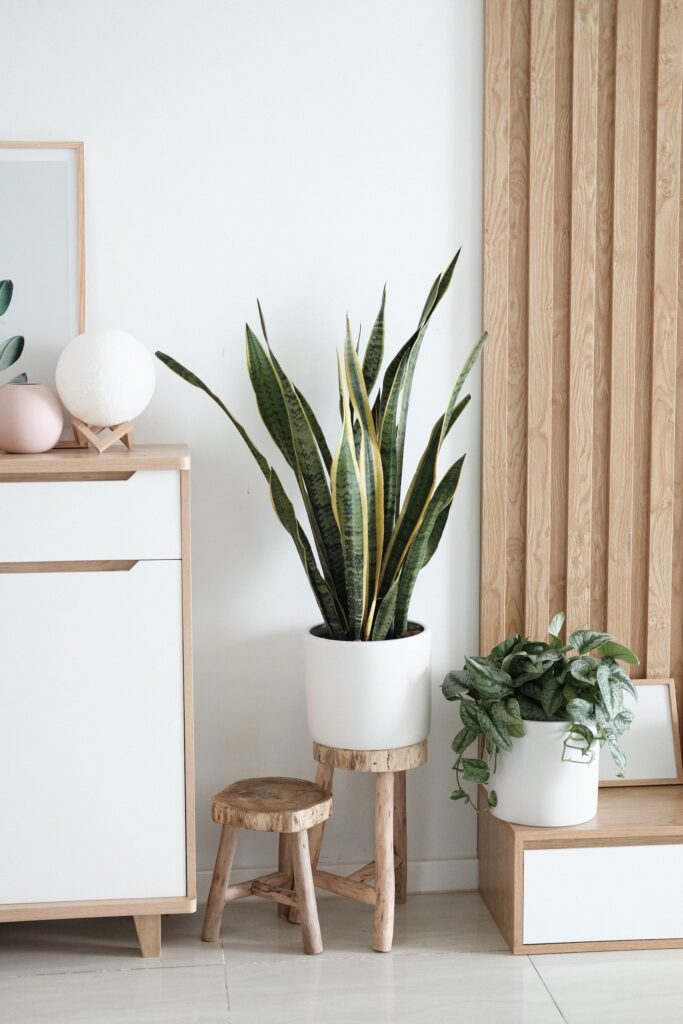
Consider incorporating a variety of indoor plants, such as ferns, peace lilies, or snake plants, to create a vibrant and refreshing atmosphere.
Additionally, vertical gardens or living walls can be stunning focal points that bring nature indoors.
3. Natural Materials
Using natural materials like wood, stone, and bamboo is another important aspect of biophilic design.
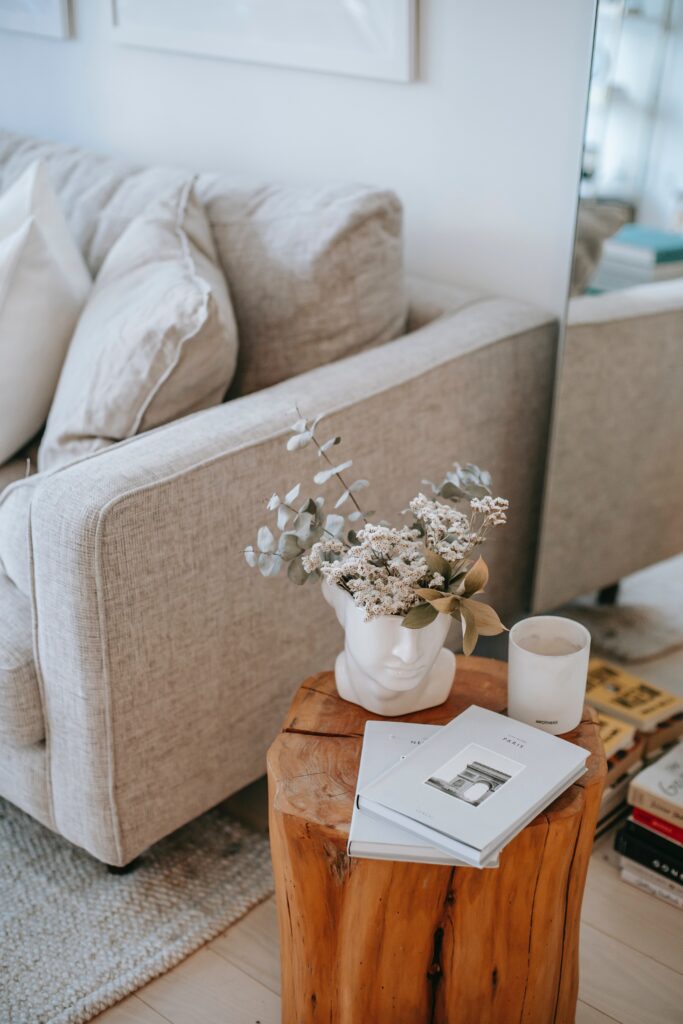
These materials add warmth, texture, and a sense of authenticity to your home.
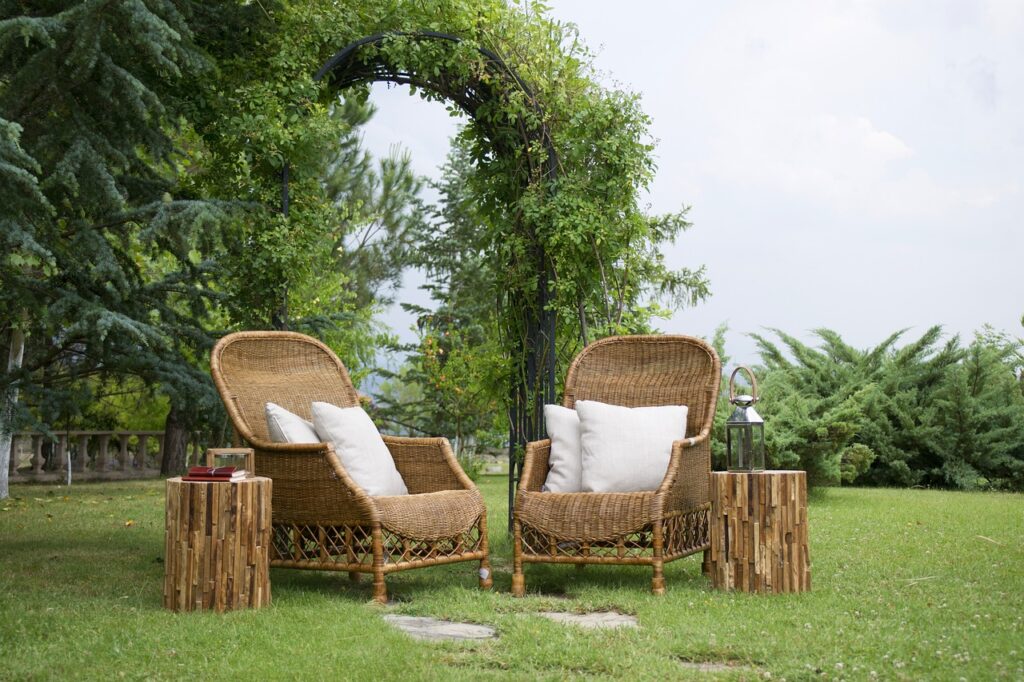
Consider incorporating wooden furniture, stone countertops, or bamboo flooring to bring the beauty of nature indoors.
4. Water Features
Including water features, such as indoor fountains or small ponds, can create a soothing and tranquil ambiance.
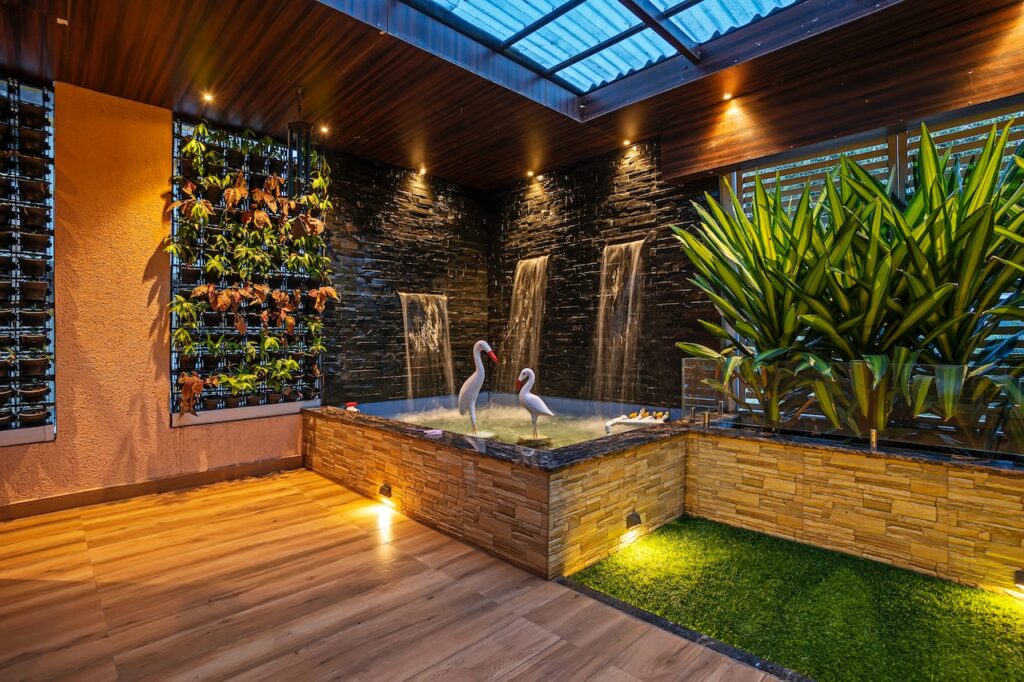
The sound of flowing water can be incredibly calming, mimicking the peacefulness of a natural environment.
Water features can be incorporated in living areas, entranceways, or even bathrooms to enhance the overall biophilic atmosphere.
5. Views of Nature
If you have access to outdoor views, make the most of them.
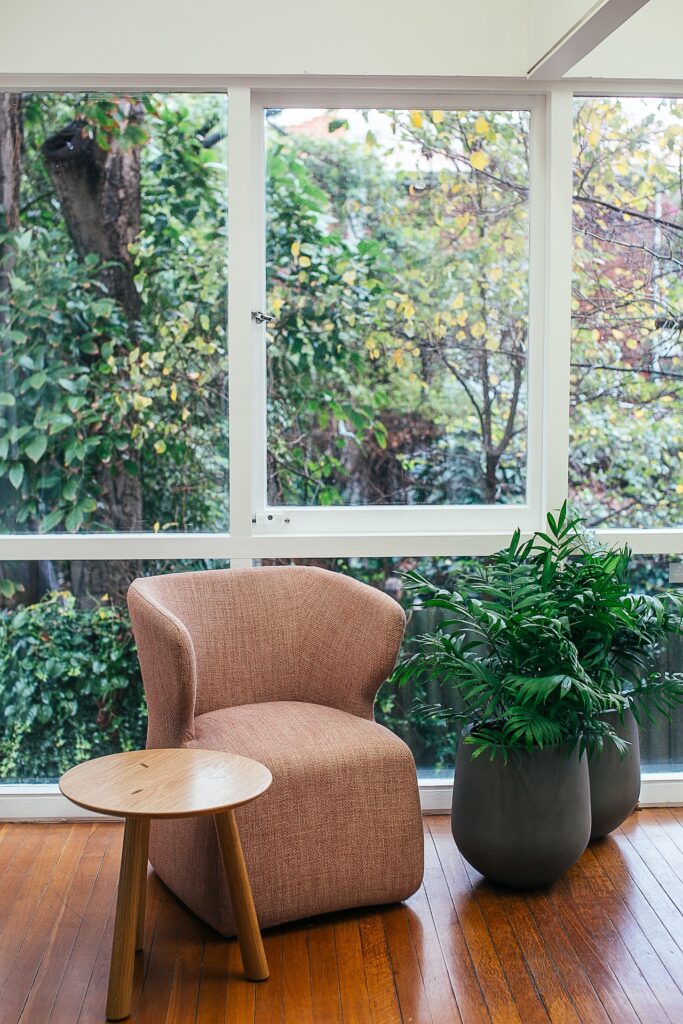
Position furniture or workspaces near windows that provide scenic views of nature, whether it’s a garden, a park, or just something green and pretty.
If your view is limited, consider incorporating nature-inspired artwork or murals to create the illusion of being surrounded by nature.
Biophilic Principles
In this section, we will explore the three primary principles of biophilic design and how you can incorporate them into your space.
Principle 1: Direct Experience of Nature
The first principle of biophilic design involves incorporating direct experiences of nature into your space.
This can be achieved by incorporating natural elements discussed above. Essentially, the more you’re around natural features, the better.
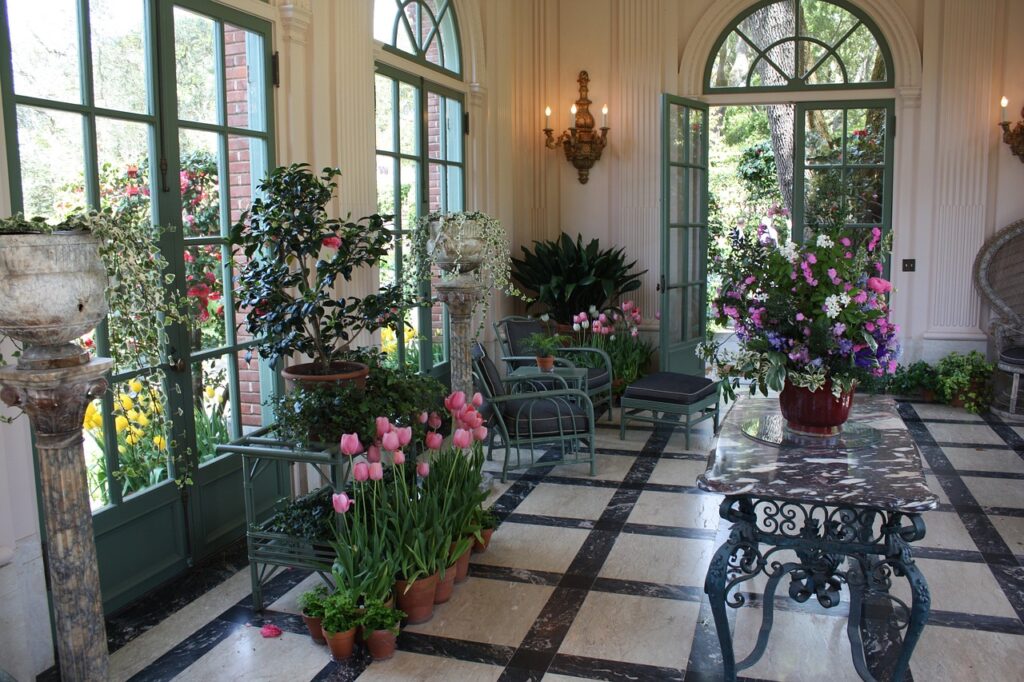
Here’s an article on the benefit of indoor plants!
Principle 2: Indirect Experience of Nature
The second principle of biophilic design focuses on creating a nature-like experience using natural materials, colors, and shapes.
Choosing wood, stone, or bamboo for flooring, furniture, and decor adds natural beauty and connects you to the outdoors.
Using nature-inspired colors like green, blue, and earth tones creates a calm and harmonious atmosphere.
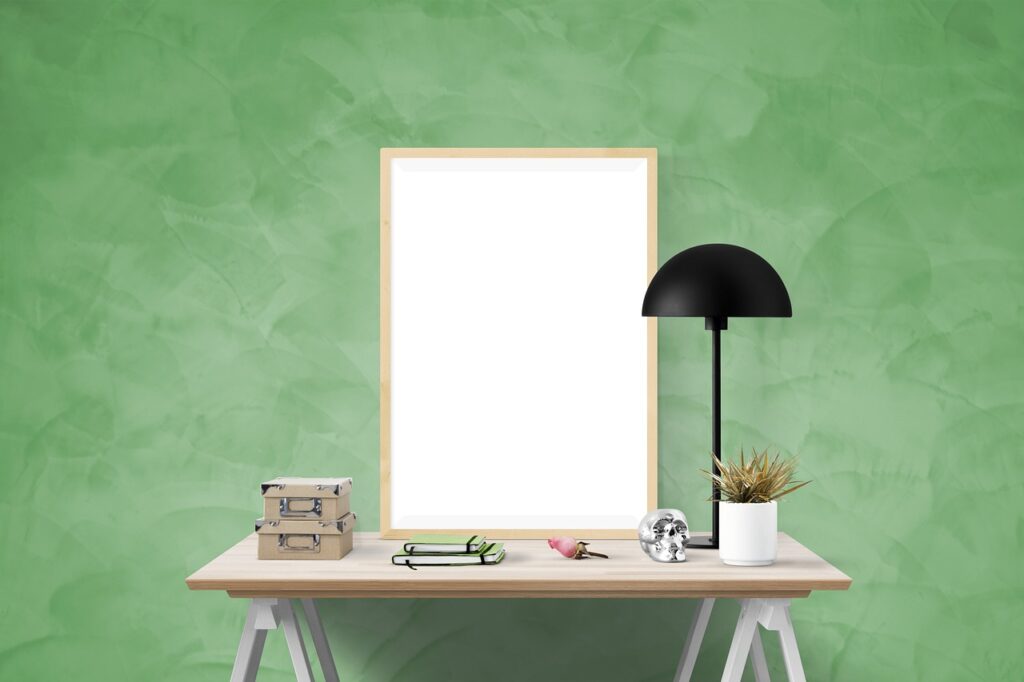
Adding organic patterns and textures with artwork, textiles, or wallpaper enhances your home’s natural ambiance.
Here’s some inspiration on incorporating natural colors and patterns into your home!
Principle 3: Experience of Space and Place
The third principle of biophilic design is about making spaces that feel like nature.
This can be done by using natural shapes and patterns, which bring a peaceful and calming feeling.
Spaces that offer a sense of escape, like cozy reading spots or hidden garden corners, provide a break from the busy everyday life.
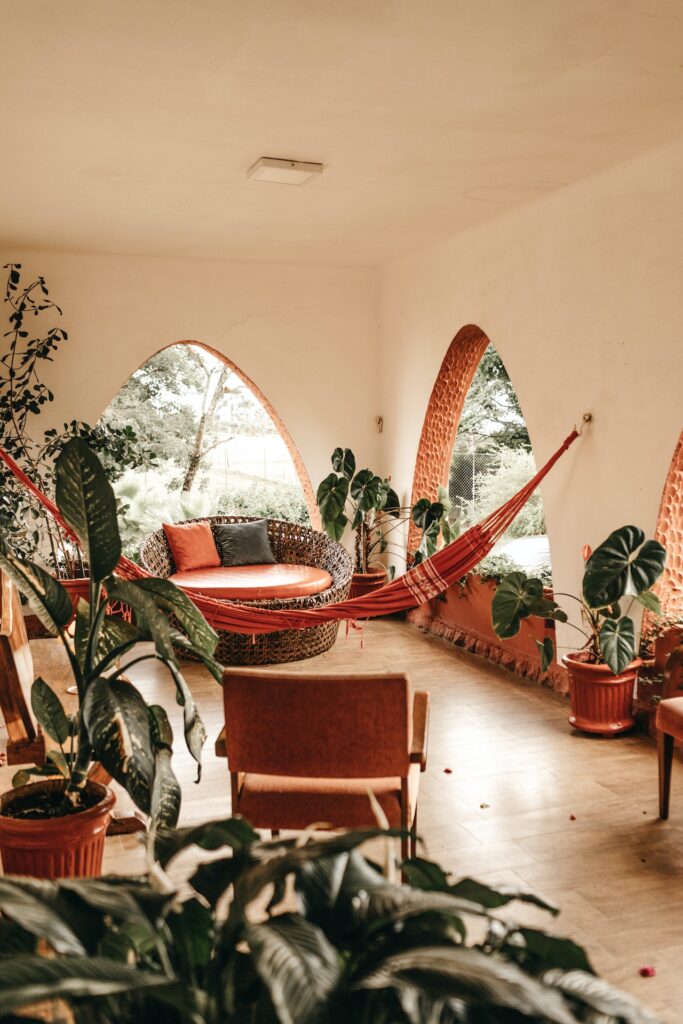
On the other hand, spaces that offer a sense of openness, like rooms with big views or outdoor living areas, connect us to the wider natural world.
Learn more about creating a sense of refuge and prospect in your home.
The 5 Senses of Biophilic Design
Let’s explore how this design philosophy engages our five senses and enhances our connection with nature.
Sight: A Visual Delight
Biophilic design utilizes visual elements inspired by nature to create visually pleasing and calming spaces.

These elements bring the natural world into your home, helping you feel grounded and at peace.
Sound: The Soothing Symphony
Biophilic design takes into account the auditory experience and aims to integrate soothing sounds of nature into indoor spaces.
This can be achieved through the use of water features like fountains or aquariums to create a peaceful sound of flowing water.

Bringing in natural materials like wood and bamboo can also contribute to a more serene soundscape, as these materials have a gentle and soothing resonance.
Additionally, incorporating plants into your home can help absorb background noise and create a more peaceful ambiance.
Smell: The Aroma of Nature
Biophilic design uses natural scents to connect us to nature. We can diffuse essential oils like lavender, eucalyptus, or citrus to create a calm and refreshing atmosphere.

Indoor plants not only add visual appeal but also release natural fragrances that can enhance the sense of being surrounded by nature.
Consider incorporating fragrant plants like jasmine, rosemary, or mint into your living space to create an olfactory delight!
Touch: Tactile Connection
Biophilic design uses natural textures and materials to encourage touching and exploring.
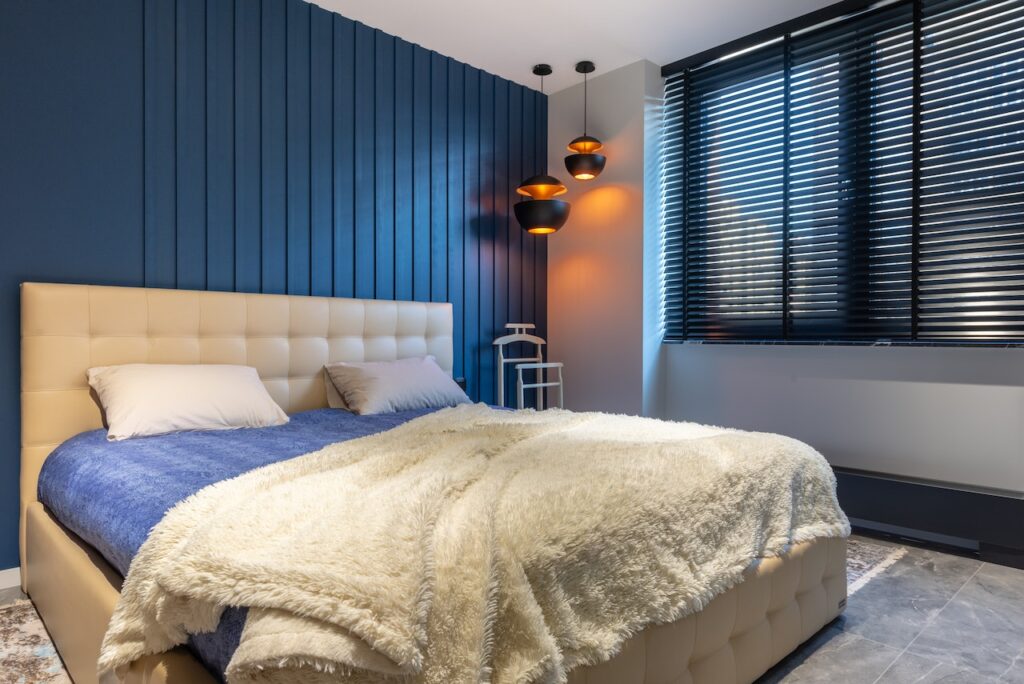
Using things like linen or wool in furniture or bedding can make us feel cozy and warm.
Incorporating natural materials like stone, wood, or cork in flooring and furniture can provide tactile variety and a connection to the outdoors.
Taste: Culinary Delights
I know, I know. How am I going to pull this one off? He’s not going to have us licking the plants is he?
Although taste may not appear linked to biophilic design, connecting with nature through our sense of taste can enhance our experience.
Add a herb garden to your kitchen or dining area. Pick fresh herbs for your cooking.
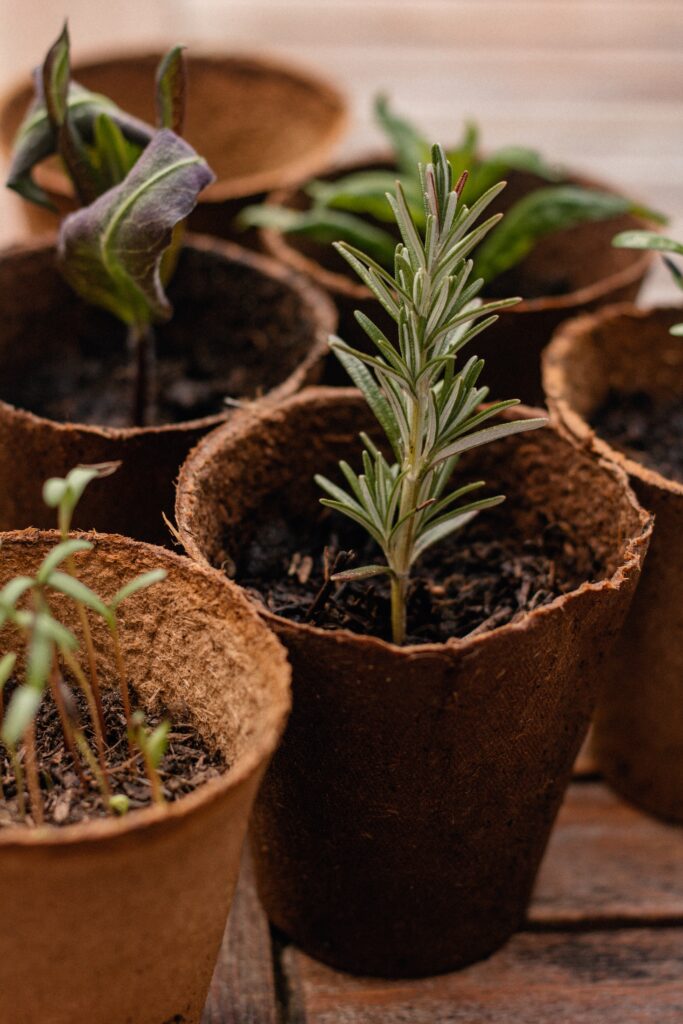
Growing and harvesting plants is rewarding and deepens your connection to nature.
Benefits of Biophilic Design
Embracing biophilic design in your home can have numerous benefits for your overall well-being.
Here are a few reasons why you should consider incorporating this design philosophy into your living spaces:
- Improved air quality: By introducing plants and natural ventilation systems, biophilic design helps improve indoor air quality, making your home a healthier place to live.
- Enhanced relaxation and stress reduction: Biophilic elements, such as natural light and views of greenery, have been shown to reduce stress and promote relaxation.
- Increased productivity and creativity: Studies have found that exposure to nature and natural elements can boost productivity and creativity.
- Better cognitive function: Being surrounded by nature-inspired design elements has been linked to improved cognitive function and concentration.
Here are a few specialities in the field of Biophilic Design to consider!
Biophilic Design Architecture
Incorporating elements of nature into architectural design has become increasingly popular in recent years.
Biophilic design architecture aims to create spaces that foster a deep connection with the natural world while increasing productivity and sustainability.
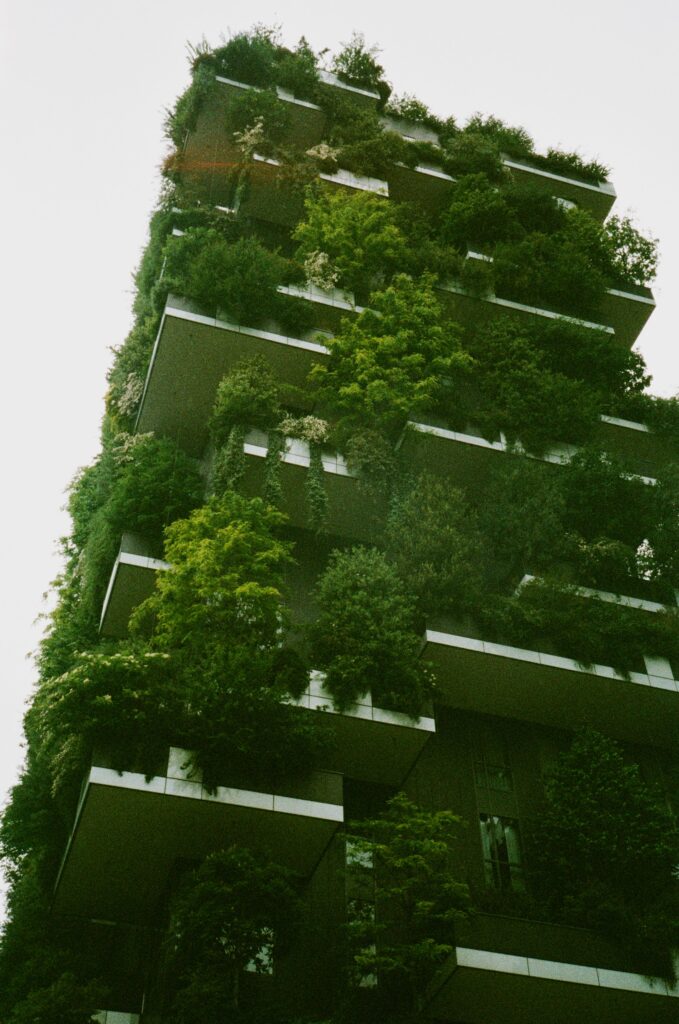
Biophilic Office Design
Bring all this awesomeness to work with you!
Biophilic office design works to integrate nature into your company setting to increase productivity, creativity, wellness and more!
Biophilic Interior Design
Want to know what happens when you place all these great concepts into your home?
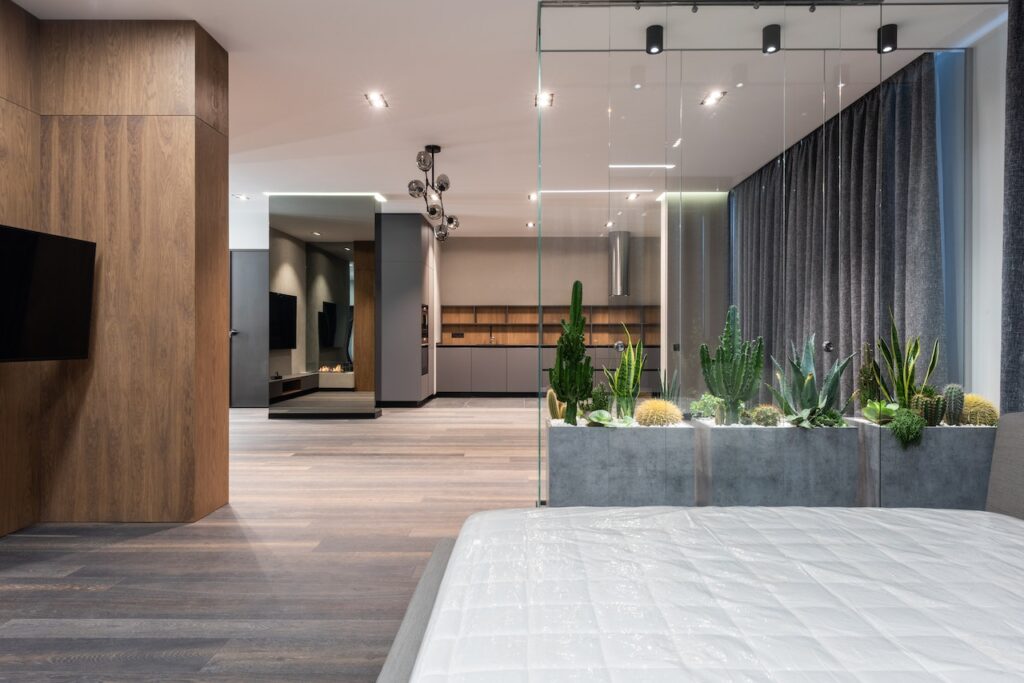
What is Biophilic Interior Design?
Biophilic interior design is an approach that seeks to create a home space that mimics the natural environment.
It utilizes the use of natural materials, colors, and patterns to create an aesthetic environment with a sense of calm and serenity.
Conclusion
Biophilic design brings the beauty of nature indoors and creates a healthier and more sustainable living environment.
The principles of biophilic design create an environment that produces a happier, healthier you!
So go ahead, embrace the green and nourish your body and soul!
Have a favorite element of biophilic design? Tell me all about it in the comments below!
Until next time, stay cozy my friends.

